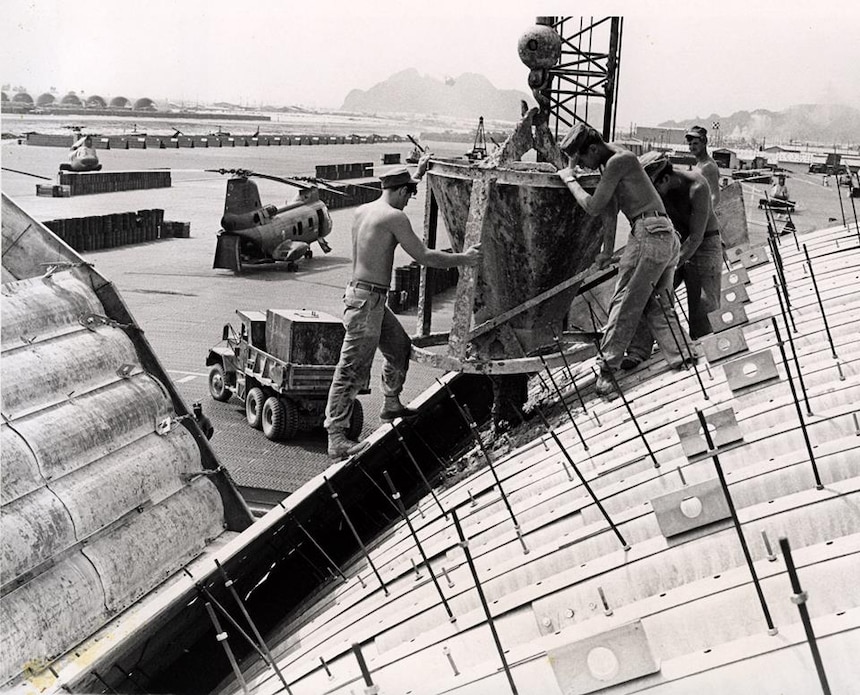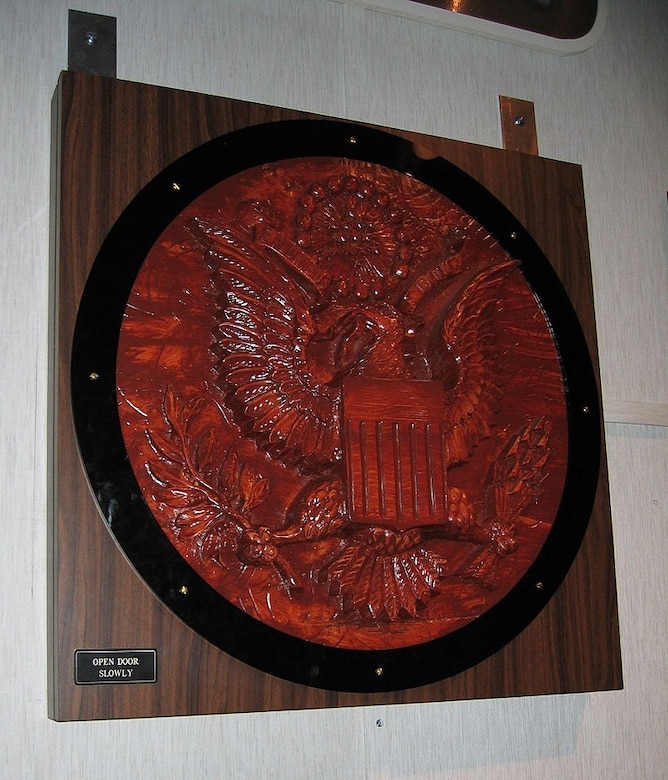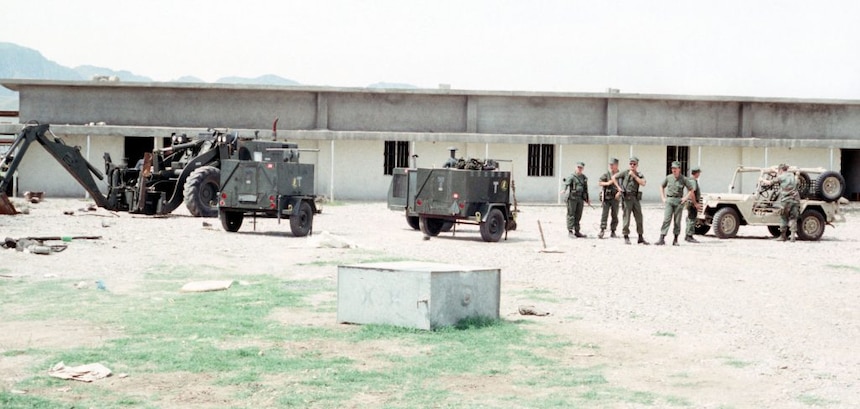Consolidated by U.S. Navy Seabee Museum, Naval History and Heritage Command
April 16
1944: 4th Naval Construction Brigade commissioned.
1967: Naval Mobile Construction Battalion (NMCB) 3 s pre-advance party arrived at Phu Bai, Republic of Vietnam (RVN), to select a new advance base camp site.
April 17
1968: Part of NMCB 71 arrived in Chu Lai, RVN.

April 18
1969: NMCB 4 main body departed Port Hueneme, California, and arrived at Da Nang, RVN.
1972: The last Seabee Team site in Vietnam was closed down by Seabee Team 0321. The teams employment at Ham Tan, Binh Tuy Province was shortened to four months by an accelerated phasedown schedule.
April 20
1946: 301st Naval Construction Battalion (NCB) inactivated on Guam.
1970: NMCB 3 advance party returned to the continental United States (CONUS) via commercial aircraft.
1971: NMCB 5 formally relieved NMCB 74 in Vietnam.
April 21
1945: ACORN 50 was decommissioned and Naval Air Base Kobler was commissioned. Used during World War II, an ACORN was a tailored unit designed to carry out the rapid construction and subsequent operation of a landplane and seaplane advance base. Each ACORN had a construction battalion attached to it, as well as trained personnel to operate the control tower, field lighting, aerological unit, transportation, medical, berthing, and messing facilities. A Construction Battalion Maintenance Unit (CBMU) also accompanied each ACORN to maintain the base after the initial construction was completed and the construction battalion had been withdrawn. During the war, ACORNs were sent to such places at Guadalcanal, Espiritu Santo, Green Island, Rendova, Treasury Island, and Majuro.
1966: A Naval Support Unit of Seabees was established in the Department of State. This assignment came about in 1964, because cleverly concealed microphones and listening devices were discovered in the United States embassy in Moscow. As a result of this discovery, Seabees were sent to the newly built U.S. embassy in Warsaw. They proceeded to tear up floors and walls, and there too discovered ingeniously hidden microphones and listening devices. Consequently, the Department of State decided to use Seabees to keep an eye on foreign contract construction at American diplomatic missions in Soviet-bloc countries and also to perform maintenance duties and minor repair construction. The program was later extended to American diplomatic missions in the Far East and in Africa. These informal arrangements were made more permanent with the organization of the Department of State Naval Support Unit.


1969: Cmdr. R.D. Gaulden, Civil Engineer Corps (CEC), commanding officer of NMCB 4, relieved Cmdr. J.J. Lee, CEC, commanding officer of NMCB 12 at Camp Adenir, Da Nang, RVN.
1971: NMCB 3 main body flights, consisting of three passenger flights and one cargo flight, departed Da Nang, RVN, for Port Hueneme, California.
April 22
1943: 91st NCB established at Naval Construction Training Center (NCTC) Camp Peary, Magruder, Virginia.
1971: Cmdr. Henry E. Keppel, Jr., CEC, commanding officer of Construction Battalion Maintenance Unit (CBMU) 302, relieved Cmdr. J.D. Kirkpatrick, CEC, commanding officer of NMCB 74, as camp commander of Construction Battalion Center (CBC), Bien Hoa, RVN; main body of NMCB 71 returned to Davisville, Rhode Island, from deployment to Naval Station Roosevelt Roads, Puerto Rico.
1991: Following the Iraqi defeat, the Kurdish minority living in northwestern Iraq rebelled in an attempt to win independence. The Iraqi government responded harshly and a gigantic refugee problem developed as hundreds of thousands of Kurds fled their villages into the mountains. The United Nations intervened to protect the Kurds and an Allied-occupied, protected enclave was established around Zakho, Iraq. A relief operation, Operation "Provide Comfort," was launched to provide facilities for the refugees until they could return to their villages.
On 11 April, Naval Mobile Construction Battalion 133, deployed at Rota, Spain, was ordered to send its Air Detachment to Zakho. This was followed on April 22 with orders for the battalion to recall all its details and to redeploy its main body to Zakho. While in Iraq, NMCB 133 was under the tactical command of the U.S. Army 18th Construction Brigade, consisting of the U.S. Army 94th Heavy Engineer Battalion, a British Army engineer squadron, a Dutch engineer battalion, and several smaller U.S. Army logistical units. NMCB 133's camp was established in a walled compound which was also the headquarters of the 24th Marine Expeditionary Unit and the 18th Engineer Brigade. The Seabees were immediately over-tasked and went to a 12-hour day schedule, providing support to the refugee camps in the area. Work consisted of latrine construction, electrical and water-well support, road grading, forklift support, berm construction, and wash-rack construction. In general, the work could best be described as emergency service relief work.

180420-N-XZ182-0385.jpeg
It was originally anticipated that the Seabees would remain at Zakho for three months. It turned out, however, that they were able to leave after only eight weeks because during that period upwards of 300,000 Kurds were convinced that it was safe to return to their homes. The displaced persons camps near Zakho which had held as many as 60,000 Kurds at the midpoint of the deployment, saw this number drop to less than 15,000 by the time NMCB 133 departed.